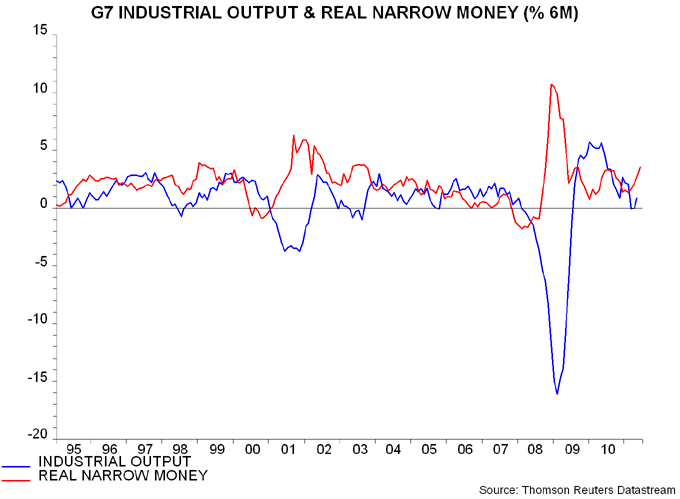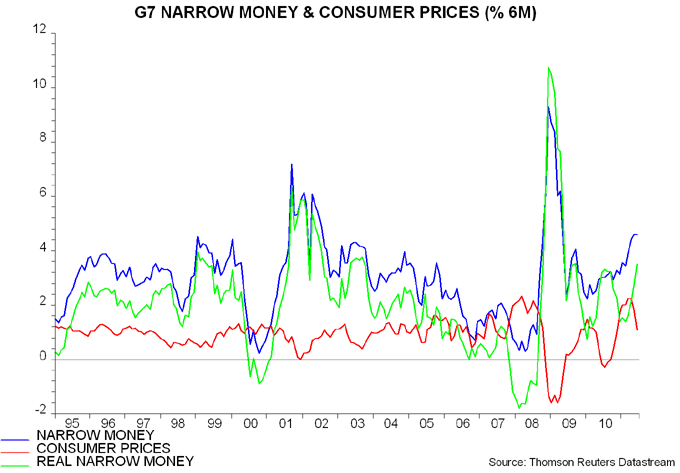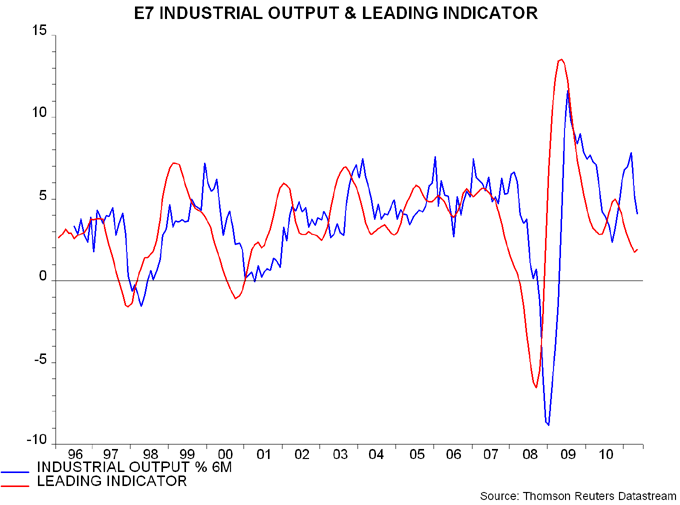Monetary backdrop improving as inflation drag abates
A deepening Eurozone debt crisis could disrupt the scenario but G7 real money trends continue to point to a recovery in global economic momentum during the second half.
The first chart shows six-month growth in G7 industrial output and real narrow money. The latest real money plot is an estimate for June, incorporating US and Japanese monetary data and European CPI numbers. Real money expansion picked up further last month and may have reached its fastest pace since 2009.
Real money leads output by between six months and a year. Growth bottomed in February so output momentum should revive from August at the earliest and February 2012 at the latest. An early turnaround is more likely because the slowdown in economic momentum in response to earlier monetary weakness was exaggerated by Japanese supply disruption, which is now reversing.
G7 narrow money has been growing solidly in nominal terms, with US and Japanese strength offsetting European weakness. The rise in real expansion in June, however, was driven by a slowdown in CPI inflation – second chart. Barring a renewed surge in commodity prices, this slowdown should extend, as discussed in a previous post. The inflation drag on growth, in other words, is reversing.
Emerging-world monetary trends are weaker than in the G7 but lower headline inflation will improve economic prospects by supporting real money expansion and relieving pressure for further policy tightening. E7 economies remain closely tied to the G7 cycle and are usually early to pick up shifts in global momentum. A leading indicator of E7 industrial output expansion derived from OECD data improved marginally in May – third chart.
The promising economic outlook suggested by monetary trends, of course, could be wrecked if Eurozone policy-makers fail to stem the current crisis, or if the Federal Reserve uses recent economic weakness as an excuse to launch more QE, resulting in a further surge in commodity prices.




Reader Comments